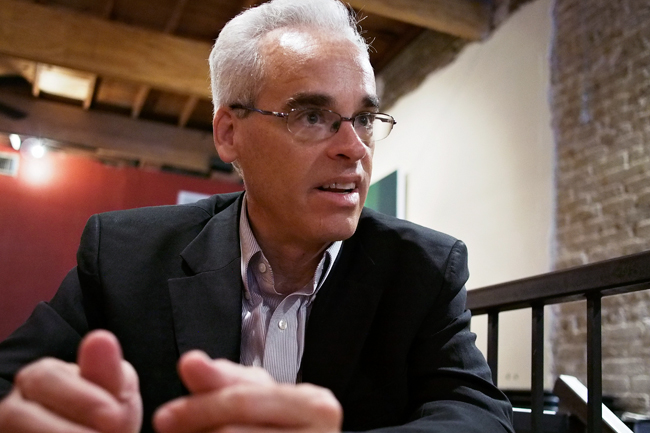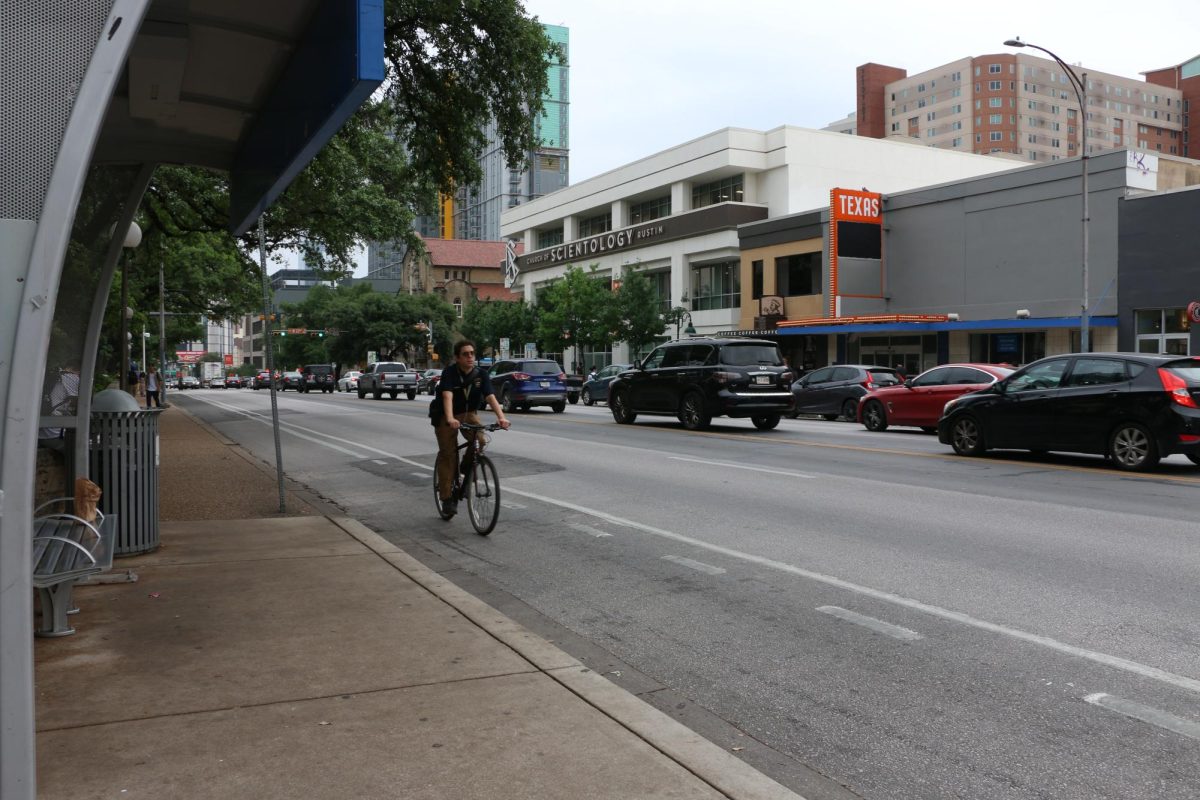Chris Riley, Austin City Council member and District 9 seat candidate, sat down with The Daily Texan to discuss his plans should he be reelected. This year’s city election is the first under the council’s 10-ONE structure, in which each council member will represent one of 10 geographic districts in the city. Riley has also worked with students to revise the West Campus sound ordinance. District 9 covers most of the UT campus, West Campus, North Campus, Hyde Park, downtown Austin and South Congress. The interview is the first in a series of three with the District 9 candidates.
The Daily Texan: How do you feel about working with the new 10-ONE system if you are reelected?
Chris Riley: I’ve been watching all the races, and I really enjoyed seeing all the interest in all these positions. I think it’s a very historic time for Austin.
We always need to be concerned about big picture issues and having geographic districts certainly will position us to focus on concerns about our own areas. District 9 is a very important area for the whole city, and it’s one that really warrants some very careful attention. There are very unique parts of District 9, but in some ways it’s a microcosm of the whole city.
DT: You’ve been very supportive of transportation network companies like Uber and Lyft. What prompted your active support?
CR: For some time now, Austinites have been wanting more transportation options, especially at night. It’s particularly important here in District 9, where so many people like to come down and enjoy the nightlife downtown, but need a way home late at night. The bus isn’t always convenient; taxi cabs aren’t always available. For years, there’s been a real issue with drunk driving. It’s in the wake of last year’s South By Southwest that there was a real heightened issue in getting more safe options out there.
DT: Why not just focus solely on the bus system in Austin?
CR: CapMetro will never have the city completely blanketed. It’s in the nature of travel services that we serve corridors and other areas that are oriented toward transit. It’s always going to be hard to provide effective and convenient transit services in areas that are centered around automobile ownership.
With the [MetroRapid] 801 and 803 we just launched, with the digital signs, those are pretty significant. That’s the first time we’ve been providing real-time arrival info for buses. By the end of this year, we will have that technology on all fixed stops. By early next year, that data should be available for use with third-party apps so that you can know exactly where the bus is.
DT: What other transportation options interest you?
CR: I’m especially interested in mobile options. I haven’t had a car since ’08, but that means relying on other services. I helped start Austin car share some years ago and been a regular customer of Car2Go and Zipcar and now B-cycle. I use the bus all the time. This was just one that was intriguing to me because it was new and convenient, and I heard a lot about it.
DT: What else do you want to focus on if you have another term on the council?
CR: Right now, we are in the process of revising our land development code so that it’s more oriented towards our comprehensive plan, the first one in 30 years. It talks about the lack of housing around the city and the need for a variety. The consultants we have have pointed out [that] in addition to being very complex and unwieldy. Our current development code tends to be very car oriented. They are in the process of trying to address that, more housing types on the ground. The big common theme I see is that there are a lot of people today who want to live smaller and drive less and live closer. That’s exactly what we ought to be aiming toward.
DT: You’ve been working closely with students at the University. Are you concerned about student voter turnout this election?
CR: Nobody knows how much we’ll see student participation in the election weeks from now. I’m hopeful that more students than ever will be tuning in. We see issues that directly affect student life.
Having good, strong working relationships with the University and state and county government will be helpful and represents a new era in city government. We have a decent working relationship between city management and UT administration. You haven’t seen a lot of involvement policy-wise for the council or UT students, so that’s what’s so exciting.
DT: Giving economic incentives to draw businesses to Austin has been a big issue this race. How do you feel about that?
CR: There’s a lot going on with our creative economy. We’ve been in a fortunate position with our economy. Austin has been the strongest local economy for some time now. The boom is not going to last forever, and we will have economical challenges to face. One major challenge will be looking out for the availability of jobs. There’s a long tradition of people coming to UT, falling in love with the city and wanting to stay. I think you need someone to District 9 to make sure those jobs are still available.
DT: Any plans after City Council?
CR: Whenever I’m done with City Council, I’m looking forward to taking some time to travel and getting more inspiration. The first thing I want to do is update the website for my neighborhood. I was able to create the website, but not in a way you can update it. It’s five years old, and its like leaving leftovers in your fridge; it goes bad. [What] I need to do is relearn some HTML skills and get it updated for my neighborhood.
Longer term, creating great places in Austin. Austin has so much going for her. I’d be very interested in seeing if there are more opportunities to create walkable places. For a few years now, there has been a lot of talk about millennials having a very strong interest in walkable urban environments. They’re not so interested in just living sort of a “Leave it to Beaver” lifestyle in the suburbs; they want cool exciting places where you can meet people and you have lots of options for getting around and living.
Some answers in this interview have been edited for brevity and clarity.





















